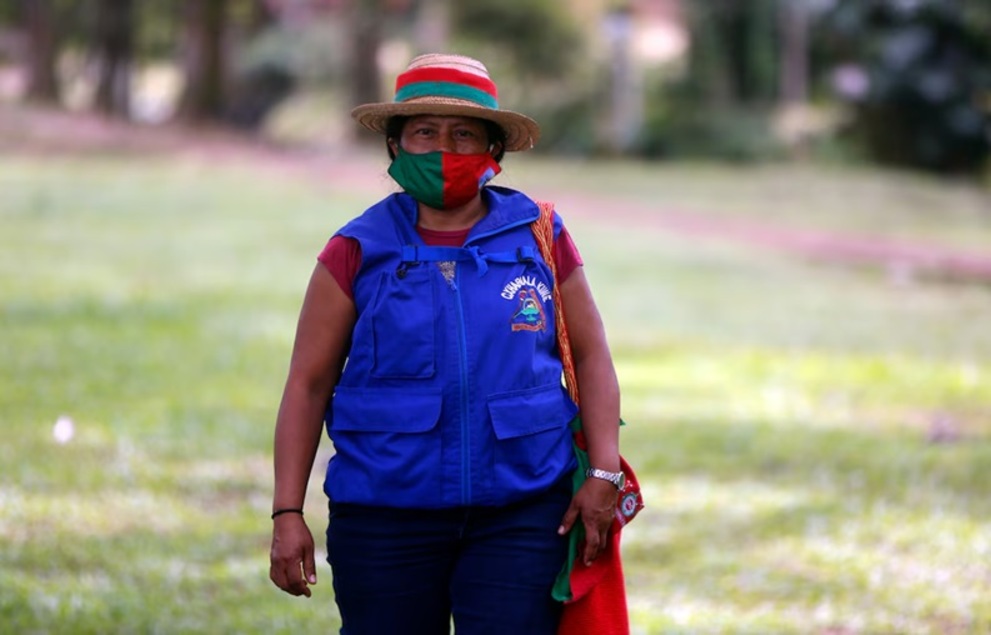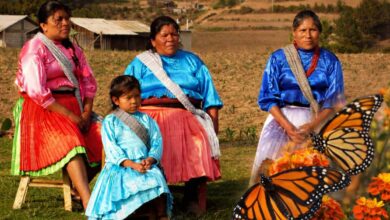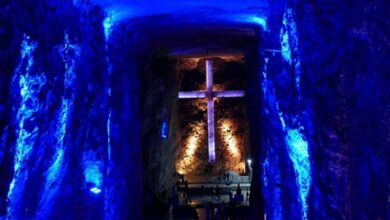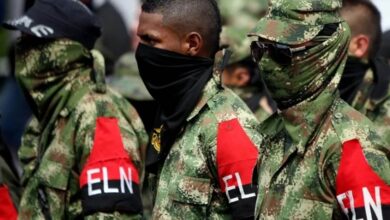Colombia’s Indigenous Guard Risks Everything to Bring Recruited Children Home

In the mountains of Cauca, unarmed Indigenous Guards walk straight into guerrilla camps to bring back children. They carry no rifles, only sacred staffs, betting on moral authority to face down men who answer to war instead of law.
A Mother Walks Into a Camp
When 13-year-old Stiven disappeared from his village in Colombia’s southwest, his mother, Patricia Elago Zetty, didn’t wait for permission or police backup. She and five members of the Nasa people’s Indigenous Guard trekked into the hills toward a camp where she believed her son was being held.
About 30 armed fighters surrounded them, rifles ready. For a tense hour, Elago and the Guard stood their ground, demanding to see Stiven and another missing boy. Finally, five rebels emerged with the teenagers in tow.
“He hugged me and said, ‘Mom, I never thought you’d risk so much,'” Elago told the Associated Press. “It was a victory.”
These rescues are becoming more common as armed groups tighten control over Nasa territory. In eight days of reporting in Cauca, AP spoke with more than 20 young people and families affected by recruitment—some escaped on their own, the Guard pulled some out, and others chose to stay in the camps.
Guns, Staffs, and a War for Children
The Kiwe Thegnas—”People’s Guard” in Nasa Yuwe—formed in 2001 to defend their land and communities without weapons. Their emblem, the bastón de autoridad, is a carved staff wrapped in red and green, colors for blood and earth.
“They carry guns—we carry staffs,” Elago said. “The staff represents our life, our courage.”
The symbolism doesn’t shield them from danger. According to the Regional Indigenous Council of Cauca, more than 40 Guard members have been killed since the 2016 peace accord. That deal ended the war with the FARC, but dissident factions, the ELN, and trafficking networks like the Clan del Golfo still operate—and still recruit children.
Elago says Stiven never chose to join. He had gone to collect farm wages in coca-growing areas when dissidents took him. She confronted the commander directly: “You talk about respecting Indigenous people, but you’re killing our youth. What respect is that?”
One rebel’s parting words chilled her: “Take care, mamma. You already smell like formaldehyde.”
Classrooms Under Banners, Communities Under Pressure
In the mountain hamlet of Manuelico, teacher Luz Adriana Díaz starts her day under banners of the Dagoberto Ramos front, a violent FARC dissident group. Armed men come by for food, to borrow chairs, even to chat. Refusing them can be dangerous.
“We can’t say no. I’ve had to be very careful,” she told AP. Several of her former students, some as young as 11, are now with the armed groups.
One young woman joined dissidents at 16, she said, to get away from home. She cooked, cleaned weapons, and managed supplies until a change in command made her fear harsher treatment. She fled and now works with a community project warning families about recruitment tactics.
“I tell families they need to build trust with their children,” she said.
The Guard also works to steer the local economy away from coca. They protect coffee fields and communal farms, but for many teens, the pull of a phone, steady meals, and the promise of “protection” still outweighs the risks.

EFE
Numbers, Responsibility, and Narrow Paths Home
The Indigenous Councils Association of Northern Cauca has tracked 915 cases of recruited Indigenous youth since 2016, including children as young as nine. Between January and June of this year alone, they documented at least 79 new cases.
Colombia’s Ombudsman’s Office recorded 409 child-recruitment cases nationwide in 2024—over 300 of them in Cauca—up from 342 the year before. UN human rights chief in Colombia, Scott Campbell, called the state’s response “ineffective and untimely,” telling AP that there’s too little coordination with Indigenous authorities to prevent recruitment in the first place.
ACIN leaders say armed groups fill the vacuum by building roads, delivering food, and offering basic services the government hasn’t provided, making it harder for families to resist their influence.
Colombia’s child-protection agency says there’s progress: 251 children have left armed groups in the first half of 2025, often through community-led initiatives. But Guard members on the ground say some factions now refuse to return anyone over 14, claiming they’re “old enough” to decide.
For NASA, defending children is part of protecting a worldview—one where coca is a sacred plant for ritual use, not a cash crop for war. That’s why Elago keeps Stiven’s photo tied to her staff: a reminder of what was nearly lost, and of the thin line the Guard holds between their community and the men in the brush.
Also Read: Haiti’s Cemeteries Under Siege: How Gangs Turn Grief into a Ransom Economy
Her son’s words still echo: “Mom, I never thought you’d risk so much.” For her, and the Guard, that risk is the price of resistance—and the staff, raised again and again, is proof that unarmed courage still matters.




